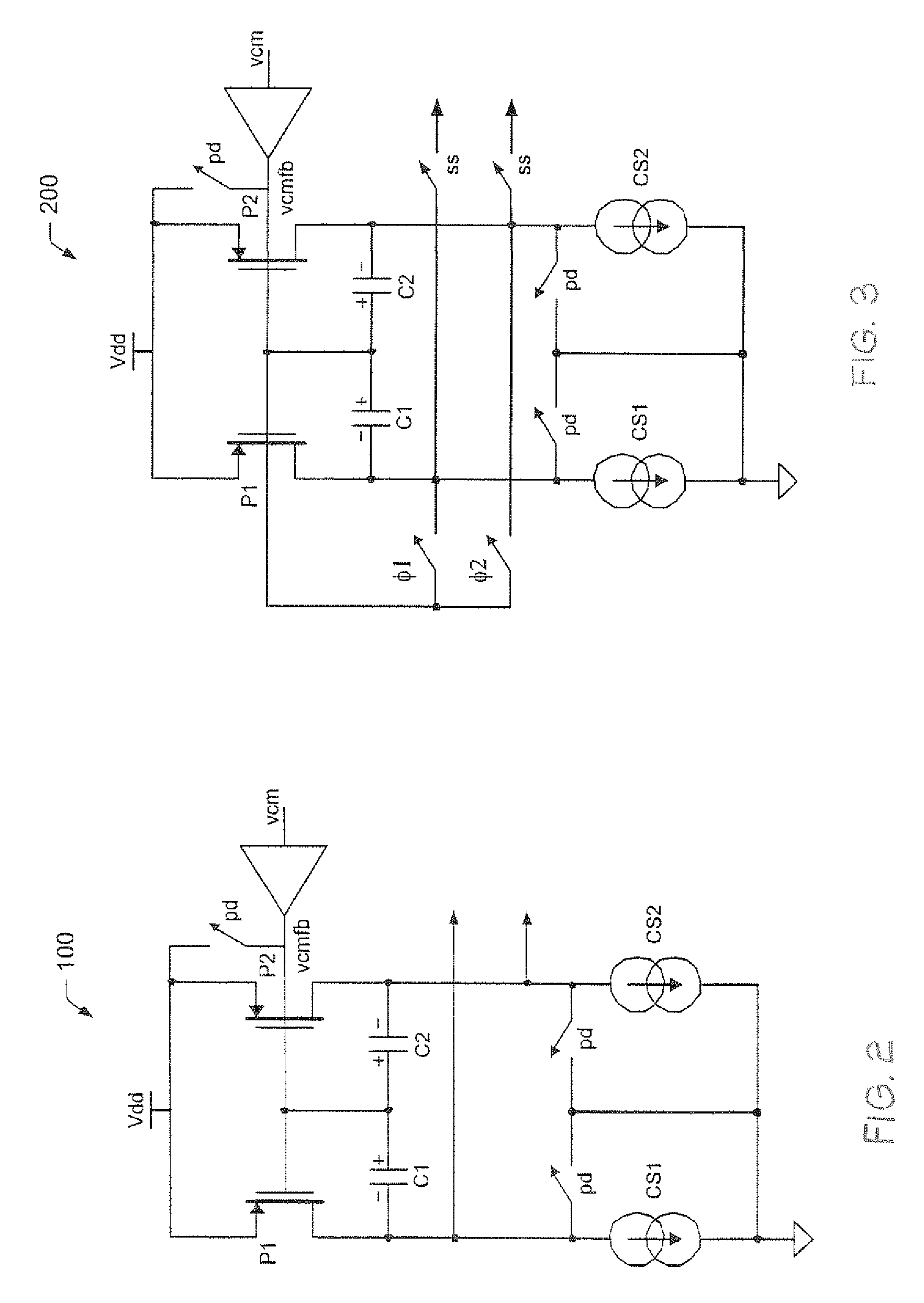Amplifier circuit with bias stage for controlling a common mode output voltage of the gain stage during device power-up
a technology of amplifier circuit and gain stage, which is applied in the direction of dc-amplifiers with dc-coupled stages, differential amplifiers, and amplifiers with semiconductor devices/discharge tubes, etc. it can solve the problems of consuming significant power, affecting the power-up sequence, so as to reduce the amount of time needed, reduce the potential difference, and reduce the power-up time
- Summary
- Abstract
- Description
- Claims
- Application Information
AI Technical Summary
Benefits of technology
Problems solved by technology
Method used
Image
Examples
Embodiment Construction
[0026]Turning now to the drawings, FIG. 1 illustrates a multi-stage amplifier 50. Amplifier 50 includes an input or Gm stage 60, a gain stage 70, an output stage 80, and a common mode feedback stage 90. Input stage 60 can receive differential inputs (Vin_N and Vin_P). Transistors P3 and P4 are coupled in cascode with a current source (CS5) to provide a gain on the output to the next stage 70. Stage 70 includes another pair of cascode-connected transistors P1 and P2, a pair of compensation capacitors (C1 and C2), and a pair of current sources (CS1 and CS2). The negative terminal of capacitors C1 and C2 are connected to the output of gain stage 70, which feeds to the input of output stage 80 and, more specifically, to the gate (or base) of transistors Q1 and Q2. Transistors Q1 and Q2 provide current at their respective emitter terminals to current sources CS3 and CS4, which produce the corresponding output from amplifier 50 and, in addition, feed a resistor-divider circuit 92 of feedb...
PUM
 Login to View More
Login to View More Abstract
Description
Claims
Application Information
 Login to View More
Login to View More - R&D
- Intellectual Property
- Life Sciences
- Materials
- Tech Scout
- Unparalleled Data Quality
- Higher Quality Content
- 60% Fewer Hallucinations
Browse by: Latest US Patents, China's latest patents, Technical Efficacy Thesaurus, Application Domain, Technology Topic, Popular Technical Reports.
© 2025 PatSnap. All rights reserved.Legal|Privacy policy|Modern Slavery Act Transparency Statement|Sitemap|About US| Contact US: help@patsnap.com



